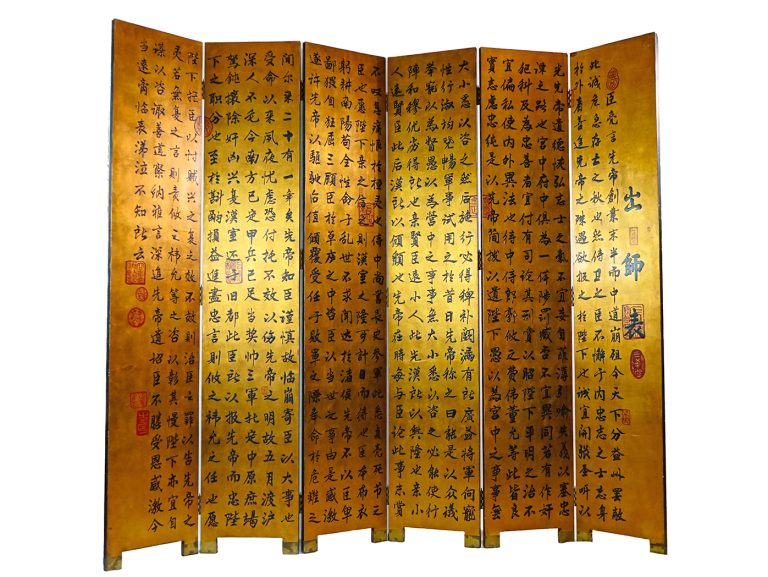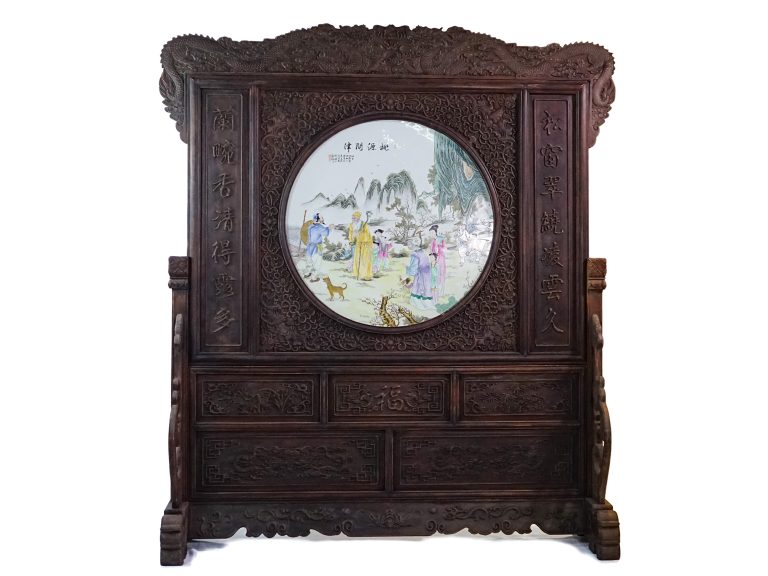

Today, in a prominent position in the center of the “Taihe Hall” of the Palace Museum in Beijing, there is a splendid and majestic throne with gold lacquer and cloud dragon pattern. It also has a sacred and special cultural connotation in the Chinese concept of hierarchy.
Also known as the “Golden Throne”. According to the research of the Forbidden City experts, it has been passed down from the Jiajing period of the Ming Dynasty to the present. From the emperor Kangxi of the Qingming Dynasty to the last emperor Puyi, they all once sat on this throne and accepted the worship of the ministers. It is a pity that in 1915, Yuan Shikai stole the kingdom and proclaimed himself emperor, claiming to renovate the Great Supreme Harmony Hall by renovating Chen Buxin, demolishing many legacy of the previous dynasty, and also causing the “Golden Throne” to suffer together.
It was not until 1947, after the Palace Museum officially took over the Antiquities Exhibition Center, that it proposed to remove the new dragon chair rebuilt by Yuan Shikai and restore the Qing Dynasty utensils left in the “Taihe Hall”, and the industry officially launched the search for the “Golden Throne”. . In 1959, Mr. Zhu Jiacheng, an expert from the Palace Museum, saw the original furnishings of the Hall of Supreme Harmony in an old photo of the 26th year of Guangxu. The golden dragon chair. Then, the Palace Museum immediately mobilized 13 experts of different types of work. It took up to 934 working days to repair the dragon chair from various aspects such as wood work, carving work, copper work, and paint work, so that it could regain its former style. Return to the Hall of Supreme Harmony.
“Throne” is synonymous with the ancient emperor’s royal seat, and the “Golden Throne” has long been placed in the Hall of Supreme Harmony in the Forbidden City for the emperor to use during important celebrations and court meetings. It would be considered disrespectful to blaspheme the imperial power. According to this, the “Throne of the Golden Throne” has witnessed the rise and fall of dynasties and the change of imperial power in a century and has strong historical value. It is a symbol of the feudal system, the crystallization of various carving skills, and it is the entrance for us to spy on the thoughts of the ancients.
Today, although the dynasty is dead, the dragon chair still exists. The “Throne of Golden Throne” is stored in the Palace Museum, open to the public for appreciation, and is regularly maintained and repaired. Descendants were fortunate enough to witness the true appearance of the throne, and they were all amazed. Experts in the craftsmanship industry were eager to try it out. Reproducing the emperor’s throne with their own hands was a major achievement in life. Therefore, they designed and produced several real dragon thrones that shocked the government and the public, attracting collectors from all over the world to compete to buy them. , are proud to have the throne.
The “Nine Dragons Throne” is magnificent in shape and gorgeous in decoration. It is a work of ghosts and gods created by a number of skilled craftsmen based on various rare treasures. “Golden lacquer” is one of the core skills, using camphor wood and Chinese fir as the base material, after the gold glue is applied to the wood, the gold foil is pasted, and the pressure is applied evenly. This cycle is repeated two to three times until everyone can see it. The throne is surrounded by golden light, with 9 embossed blue dragons coiling around the back of the chair, and dozens of fine flying dragons engraved around the base, showing a dignified royal atmosphere. In addition, behind the throne is a seven-in-one nine-dragon screen. Each screen is carved with double dragons and pearls with the technique of yang carving on the front and yin carving on the back, implying that yin and yang are in hand and are full of extravagance. The bottom of its main body is composed of three lotus seats, which represent the three talents of heaven, earth, and human beings.
It can be seen from this that the “Throne of Nine Dragons” is distinguished and majestic. It was born after careful investigation and research by various masters, following historical connotations, surpassing traditional techniques, and creating a myth of craftsmanship with painstaking effort, which amazes those who see it. . Historical inheritance is like talking with ancient greats again and again, discussing contemporary popular philosophy and art, and then precipitated into national wisdom. As a symbol of the highest power, the throne of the emperor can be described as a work with deep Chinese consciousness.

 Enquire
Enquire



